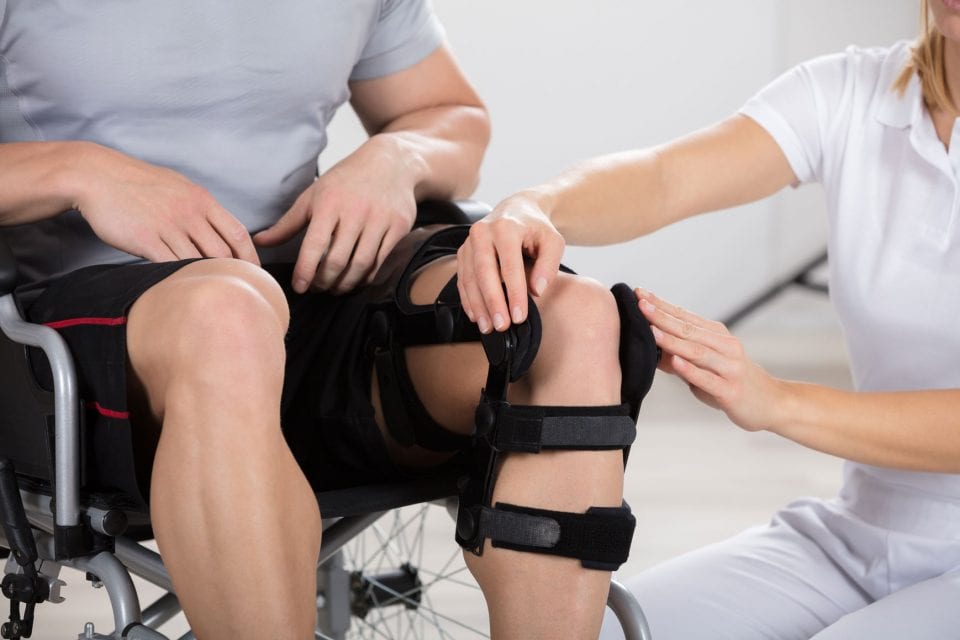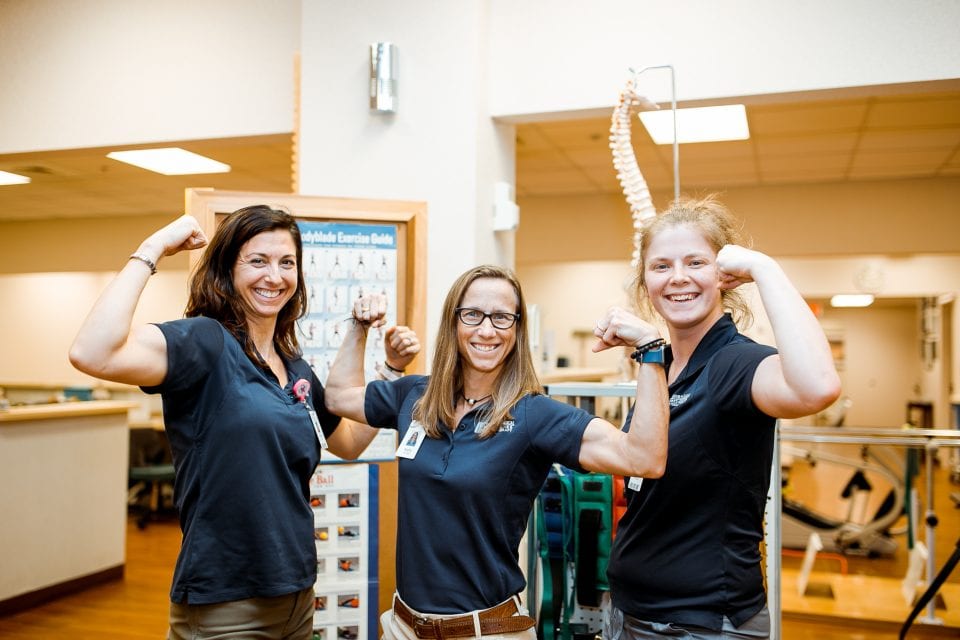
Physical Therapy Signs & Symptoms
Signs & Symptoms: Physical Therapy Problems
| Back & Neck Pain A thorough evaluation will be performed by a licensed physical therapist and the patient and therapist will set up a plan of care to help with your pain along with assisting you back to normal function. Treatment may include stretching, strengthening, postural education, lumbar stabilization and an individualized home program. Modalities may also be used for pain control. Education in care of your back and neck along with body mechanics and proper lifting may be incorporated into your treatment | Hand & Upper Extremity Therapy A complete evaluation followed by treatments for fine motor skills, possible splinting, modalities for pain which may include fluidotherapy or paraffin. |
| Rotator Cuff Injuries An evaluation of the shoulder will be performed and depending on the findings, a program of range of motion, strength and stability will be included in your treatment. If a rotator cuff surgery was performed, specific exercises outlined by the surgeon will be performed. | Total Joint Replacement Rehabilitation Physical therapy is important after a joint replacement. Specific exercises will be performed following knee replacements, hip replacements and shoulder replacements. Treatment will consist of improving mobility and strength along with manual techniques performed by the therapist. State of the art gym equipment will help patients return to their normal activities. After the evaluation, treatment will focus on range of motion, strength and decreasing swelling. Proprioceptive and balance exercises will also be incorporated. Orthotics to help prevent future problems may also be a part of the treatment plan. |
| Splinting & Wound Care The staff at Pinehurst Surgical Rehab is trained in splinting of the upper extremity. It may be necessary to splint the fingers, hand or wrist following a specific surgery or injury. This can be done in our clinic, and a lot of times the patient is fit with their splint the same day as their visit with the doctor. Minor wound care is performed, and includes removal of stitches and minimal debridement as needed. Joint and Soft Tissue Injuries/ Strains, Sprains, Fractures and Dislocations Physical therapists will evaluate injuries such as strains and sprains, including sports-related injuries. Specific muscle strengthening, and stretching as well as modalities will help the patient return to normal function. Assessment of the patient’s running mechanics, golf swing or other sport may be necessary to help prevent future injury. | Rheumatoid Arthritis Splinting and modalities along with education in daily activities can help patients with this condition function better and with less pain. |
| Bursitis & Tendonitis Over use injuries such as these can be managed with specific modalities that help with inflammation. Specific exercises for stretching and strengthening will help decrease future injury. Splinting or orthotics may also be recommended. | Pregnancy Pain Low back and Thoracic (Postural) pain can be treated while you are pregnant. These conditions can also be addressed in the postpartum period. Pelvic alignment, postural alignment, carpal tunnel compression, muscle weakness and muscle spasms are evaluated. Treatment consists of manual therapy. |
| Pelvic Pain Pelvis pain is the second most common complaint in Gynecological practices. After a thorough exam by your physician, you may be referred to Physical Therapy. The Physical Therapist will perform a musculoskeletal exam. Treatment may include manual soft tissue techniques, internal biofeedback training and electrical stimulation. | Osteopenia/Osteoporosis A condition in which the infrastructure of the bone becomes thin and weakened. Weakened bone is at a higher risk for fractures. Patients demonstrating the first signs of bone loss can benefit the most at preventing this debilitating disease. Physical Therapy treatment of Osteopenia/Osteoporosis focuses on posture, gait, balance, specific exercises, and pain control, to treat the thinning of the bone and help prevent the medical problems which can result from osteoporosis. Treatment of these conditions may include: Manual Therapy Techniques; Therapeutic Exercises; Therapeutic Activities; Biofeedback; Ultrasound; Mosit Heat or Cold; Electrical Stimulation and Bracing/Splinting. |
| Urinary Incontinence The inability to maintain control of your urine during regular daily activities. The most common types are stress and urge. Physical Therapy offers an effective non-surgical approach to incontinence. The treatment consists of re-training the pelvic floor musculature with exercises, biofeedback, and electrical stimulation. | ACL Rehabilitation Following the evaluation, a program that includes strength, range of motion, gait and modalities for pain and swelling will be implemented. The patient’s program will be based on the surgery and the restrictions the surgery may entail, such as limited weight bearing. ACL rehab can last up to 12-24 weeks depending on the activities the patient is planning on returning to. |
| Foot & Ankle Injuries After the evaluation, treatment will focus on range of motion, strength and decreasing swelling. Proprioceptive and balance exercises will also be incorporated. Orthotics to help prevent future problems may also be a part of the treatment plan. |
Orthotics
Orthotics is a specialist field of medicine which focuses on the design, production and use of orthoses. Visit our Orthopaedic Surgery specialty page to learn more.
Schedule An Appointment
Make an appointment with one of our physical therapists today.
Our Physical Therapy Providers
Leading Physical Therapists in Pinehurst, Southern Pines, Fayetteville, NC & Beyond.



